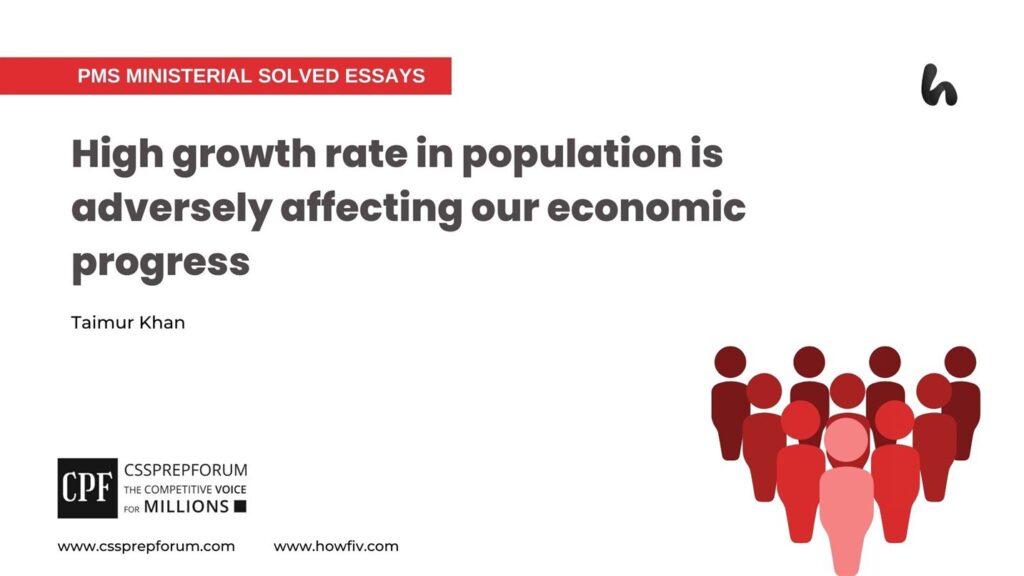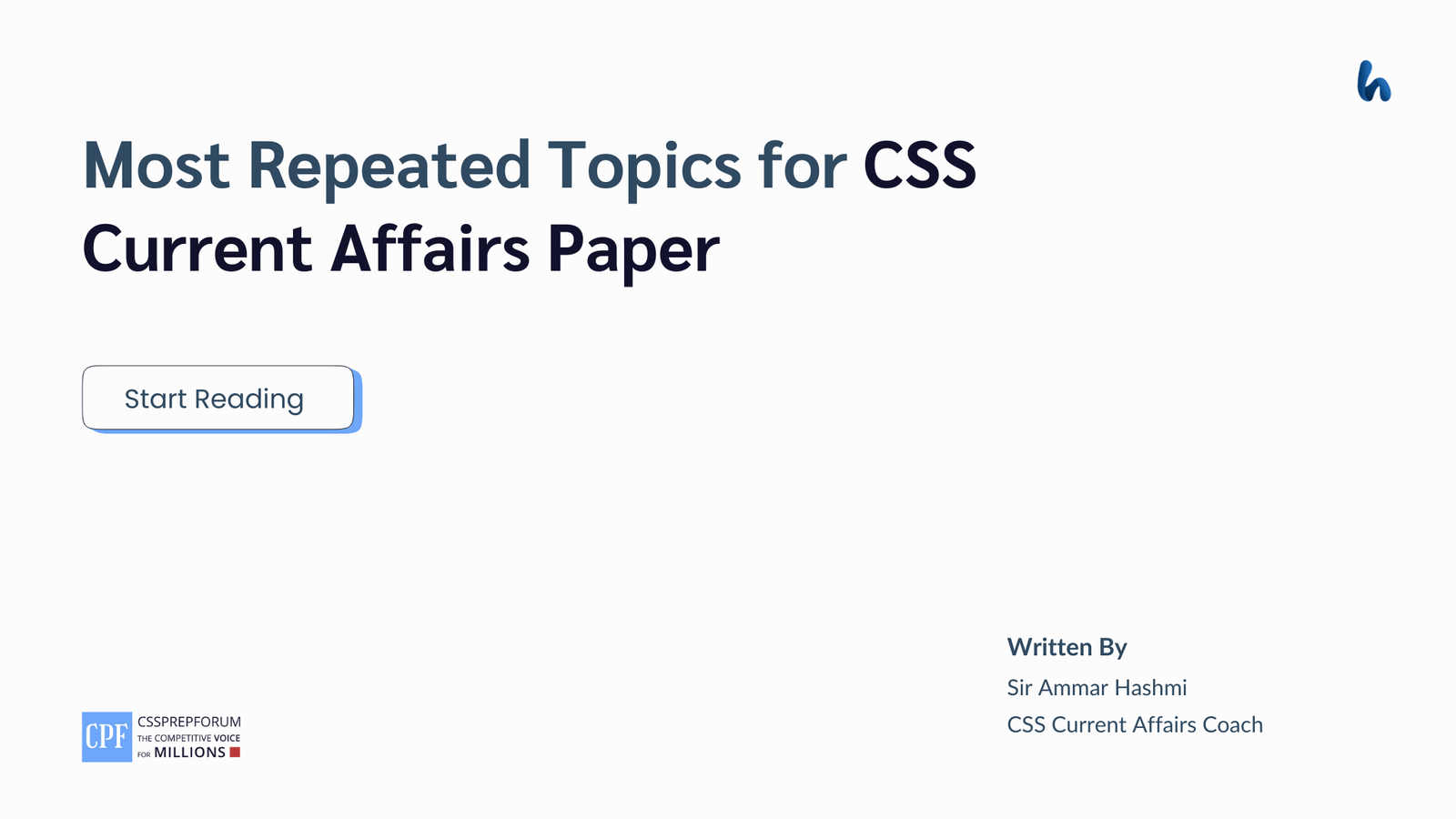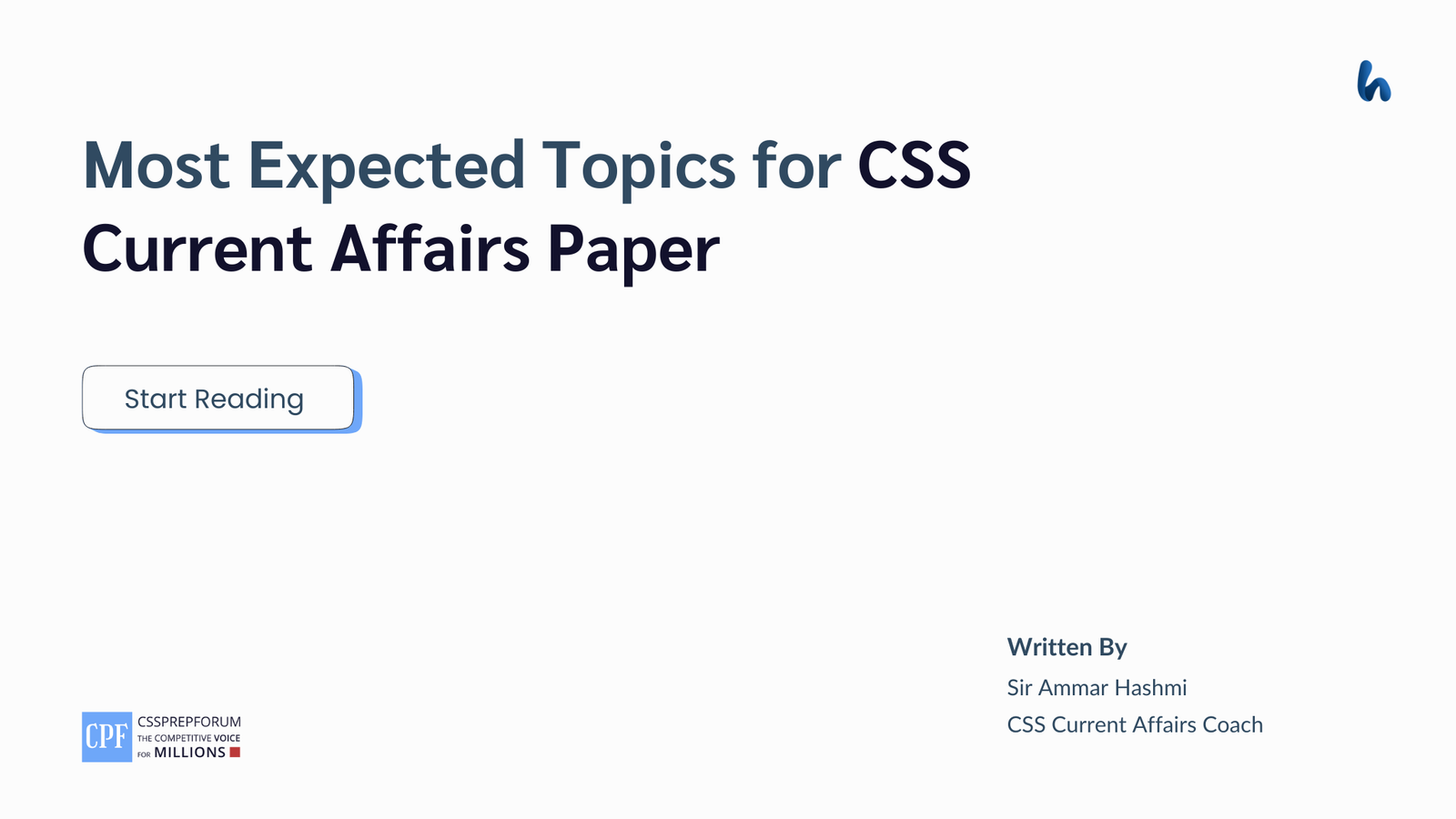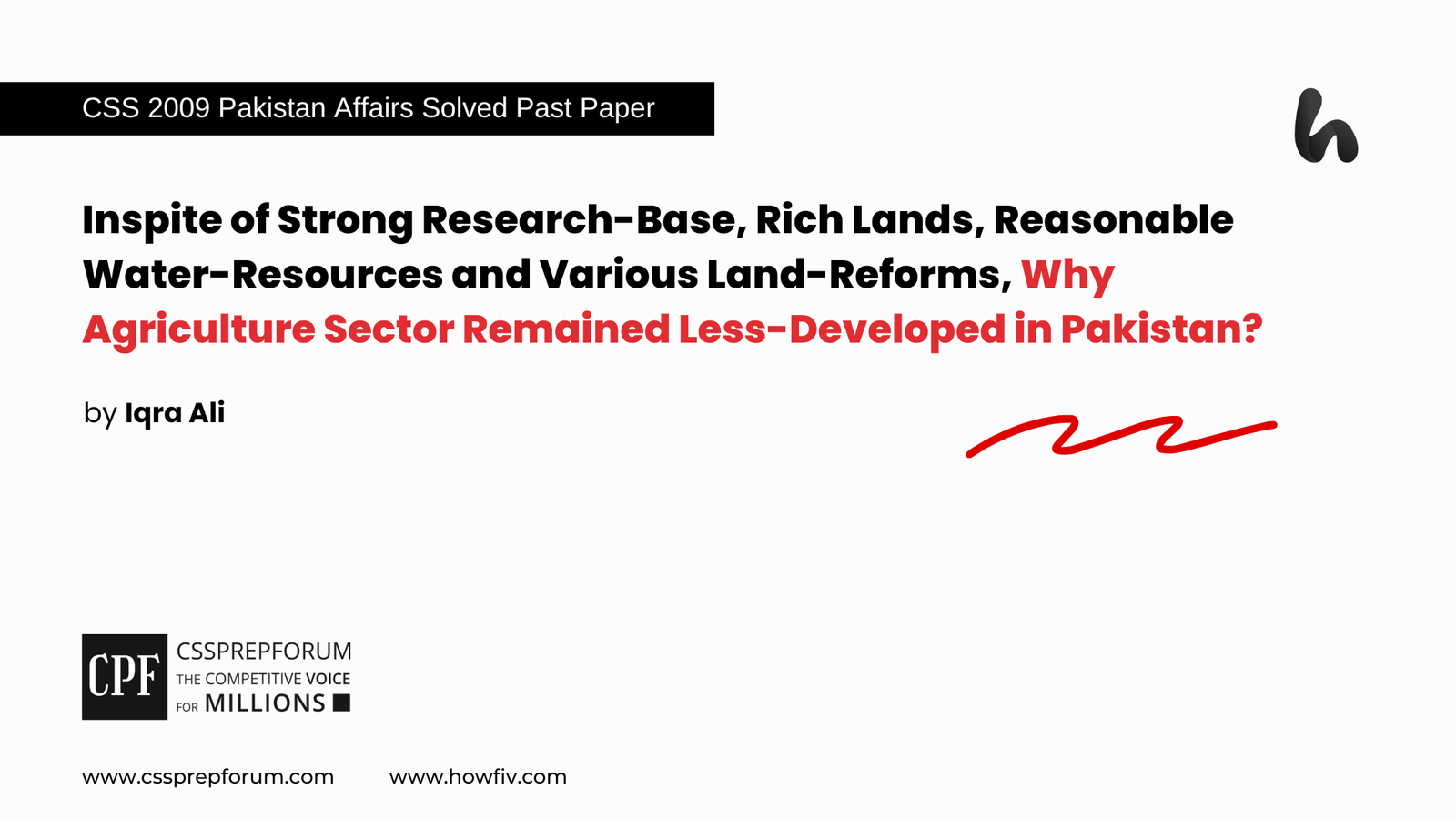PMS Ministerial Solved Essays | High Growth Rate in Population is Adversely Affecting our Economic Progress
This PMS Ministerial essay is attempted by Taimur Khan on the given pattern, which Sir Syed Kazim Ali teaches to his students, who have consistently been qualifying their CSS, and PMS essays. Sir Syed Kazim Ali has been Pakistan’s top English writing and CSS, PMS essay and precis coach with the highest success rate of his students. The essay is uploaded to help other competitive aspirants learn and practice essay writing techniques and patterns.
How To Attempt 25-Marks PMS Ministerial Essay?
Unlike CSS or PMS essays, the essays asked in the PMS ministerial or any descriptive examinations in Pakistan are of 25-marks. All you need to qualify for the PMS ministerial essay paper is to understand the topic, create an outline displaying the proper plan of your essay and write an introduction precisely carrying the thesis statement. An introductory paragraph of such essays is a 150- to 200-word paragraph that gives your examiner a quick overview of your essay and its organization. It should express your thesis (or central idea) and your key points. Remember, the introductory paragraph is a concise summary of the essay, upon which your success standstill. However, the body of your essay will develop and explain these ideas much more thoroughly. As you will see in the solved essay below, the proportion of your introduction that you dedicate to each kind of information and the sequence of that information might vary, depending on the nature and genre of the essay you select. Nevertheless, in some cases, some of this information is implied rather than stated explicitly. For better preparation, revise my lectures on how to attempt a 20 or 25 marks essay, write its outline and introduction and prove your arguments with relevant evidence in the essay’s body paragraphs.

1- Introduction
- The high growth rate in population has adversely affected Pakistan’s economic progress by dwindling the country’s domestic saving rates, decreasing purchasing power, increasing government expenditures on social services, and skyrocketing the import bill of the country.
2- Population trends in Pakistan
- With an annual growth rate of 2.02 per cent (World Bank), the highest in South Asia, and a fertility rate of 3.6, adding 4.4 million people annually (World meter), Pakistan has moved from the eighth most populous nation in the 1990s to fifth one since 2019, which is projected to surpass Indonesia and the US by 2050 (CIA Fact Book)
3- Relationship between high growth in population and economic progress of a country
- The optimist view
- Case in point: The demographic transition theory and technological development theory postulate that birth rates get decline as a country grows from low to high economic growth, and technology can help arrest low productivity, respectively hence economic growth
- The pessimist view
- Case in point: The theories of Malthusian, neo-Malthusian, and ecological disaster models associate high growth of population with low economic progress
4- How has the high growth rate in population adversely affected Pakistan’s economic progress?
- Decreasing saving rates and investment
- Case in point: According to the World Bank, the domestic saving rate in India and Bangladesh is twenty-nine per cent and twenty-five per cent of their respective GDPs compared to a paltry six per cent of the GDP in Pakistan
- Increasing government expenditures on social services
- Case in point: Although Pakistan has increased its GDP by 327-fold, as per the National Institute of Population Studies(NIPS), the country still lags behind in human development indicators, having a value of 0.544 in 2021, which is far behind than both Bangladesh and India
- Skyrocketing import bills through high energy requirements and demand-pull inflation
- Case in point: According to the State Bank of Pakistan, the inflationary gap in Pakistan’s economy is worrisome, and the overall energy demands for the country have more than doubled during the last two decades (BMC Journal)
- Dwindling agricultural productivity because of high domestic demand
- Case in point: Despite an agricultural-based country, Pakistan, according to the Business Recorder, has become a net importer of food products since the 1990s
5- Conclusion

An effective and productive workforce is significant for a country’s economic progress. However, a productive workforce is only possible when a country has a favourable demographic dividend, where more and more people are of working age. Most of the underdeveloped and developing countries have high growth rate in population with a favourable demographic dividend; nevertheless, most still lags in economic progress due to the absence of a productive labour force, coupled with a low technological endowment. Although most of Pakistan’s population with a high growth rate comprises young, they are not as productive as they should be, adversely affecting Pakistan’s economic progress. To begin with, the high growth rates in population have resulted in a pathetically low savings and investment ratio. Similarly, although the ballooning population is bleeding the national exchequer with high expenditure on social services, it has hindered the state from producing a productive labour force. In addition, it has contributed to a series of balance-of-payment crises during the last several decades because of high energy demands. Lastly, it has put a lot of pressure on the agricultural sector of Pakistan. This essay refutes the assertion that a high growth rate in population leads, or may lead to, economic prosperity in the long run and expounds the fact that ballooning population has adversely affected Pakistan’s economic progress.
Before getting down to the economic impacts of the high growth rate in population on Pakistan, it is imperative to highlight the historical trajectory of population trends in the country. In 1947 the population of Pakistan, according to the NIPS, recorded at 32.5 million in 1947 and increased to 132.4 in 1998, which had more than quadrupled and touch 225 million in 2021, as per the estimates of Worldometer’s elaboration of the latest United Nations data. Moreover, the current birth rate in Pakistan per 1000 population, according to the UN data, is twenty-six, which is the highest in the region. Similarly, in Pakistan, the fertility rate, the number of children born alive to women, touches three point six, which is also the highest in South Asia. Above all, according to the World Bank the current annual growth rate in the population of the country is two point two per cent, one of the highest among under-developed and developing countries. In addition, by adding 4.4 million souls annually, Pakistan will surpass the US and Indonesia by 2050, which will be clinching the third most populous country if the current trends continue (CIA Fact Book). In short, the current population trend in Pakistan is alarming for the economic progress of the country.
Is this high growth rate in population a boon or bane for Pakistan’s economic progress? Scholars, demographers, and economists, with their diverse theoretical and empirical insight, propound two opposing views on the impacts of high growth in population on the economic prosperity of a nation.
The demographic transition theory and technological development model hold an optimistic view regarding high growth in population and its positive relation with economic progress in a country. The demographic transition theory holds that the initial level of low economic growth wherein a country has higher population results in a steady decline of fertility rates, thus reducing the overall population and leading to economic prosperity. Therefore, the theory asserts that in the long run, higher population growth rates stimulate economic growth as it provides more labour to an economy leading to economies of scale and division of labour. Moreover, the development of technological enhancement model postulates that although labour and land are fixed factors of an economy, technological development can arrest the tendency of zero rates of growth, a phenomenon in which the excessive use of land owing to the high population and exorbitant cost of business exist in a country. In brief, the optimist view holds that a high growth rate in population provides cheap labour that stimulates economic growth in the long run, and technical inducement can help increase the productive capacity of an economy.
However, these theories have some deficiencies related especially to current demographic trends in vogue in developing countries like Pakistan. First, the demographic transition as happened in the developed world two centuries ago may not happen in developing countries now as the latter countries enjoy low mortality ratios due to advancements in the healthcare system. Similarly, most developing countries cannot afford to adopt technological development into their economic system, leading to low economic output. Therefore, most sociologists, demographers and economists associate high growth in population with economic retardedness in developing countries.
The first theory was given by Malthus, which asserts that population increase arithmetically while food production increases geometrically, which can lead to wars, famine, and diseases. The second theory, which is less pessimistic than the first, is a neo-Malthusian one. This theory, along with somehow similar proposition by the ecological models of population growth, postulates that the high growth rate in the world population has put tremendous pressure on natural resources, limited yet unsustainably utilized. In short, for developing countries, high growth in population is baneful for economic progress.
Pakistan being a developing country, has been suffering from dismal economic progress due to high growth in population. Although there are many bottlenecks that have impeded economic growth in the country, it is the high growth in population that has become a leading obstacle to achieving economic prosperity in the country. Dr Ishrat Hussain argues that up to the late 1980s, Pakistan’s economic performance was better than India’s; however, the latter has managed to arrest a high population, making it a stable economic country. On the other hand, Pakistan, according to Hussain, has failed to control the high growth rate of the population, making its economic progress unachievable. In addition, a corpus of literature has proved the negative relation between high population growth rates in Pakistan with economic prosperity in the country. To illustrate, several research studies have established a link between economic declivity in Pakistan with low investment and saving rates, high government expenditures on social amenities, the balance of payment crises, and the decline of exports in the country.
To begin with, the high growth rate in population growth has shrunken domestic savings in the country. The low domestic savings, in turn, has impeded domestic investment in the country. For a modern economy, domestic savings play a crucial role in making the economy run. For example, the domestic saving rate in India and Bangladesh is twenty-nine per cent and twenty-five per cent of their respective GDPs; in contrast, the gross domestic saving rate in Pakistan is a paltry six per cent of the GDP, as per the statistics of the World Bank. The higher the saving rates, the higher the domestic investment in an economy. However, due to the high population rate in Pakistan, the family cannot save their incomes because of high expenditures, leading to low investment in the economy. As a result, Pakistan has always tried to attract foreign direct investment, which has not only fluctuated the economic situation in the country but also made the country dance to the tunes of foreign investors. In brief, the high growth rate in population has hackneyed domestic savings and investment, putting the country’s economic sovereignty at stake.
Besides, higher growth in population has inflated public expenditure on social services. The higher the population growth, the more public funds are required to cater to the needs of the ballooning population. In addition, according to an estimate by NIPS, Pakistan has gained a 327-fold increase in its GDP since independence, but the country still lags behind in human development indicators. For example, the HDI score for Pakistan in 2021 is 0.544, which is lower than that of both India and Bangladesh. In addition, the higher GDP compared to a few decades ago in Pakistan could have been earmarked for social development in the country; however, due to high population growth in Pakistan, the country has failed to produce an effective workforce necessary for the economic development of a country. For example, the labour productivity in Pakistan was higher than both China and India in the early 2000s, but due to higher population growth in the former, the labour productivity has dwindled compared to the latter two countries. The labour productivity in Pakistan is twenty per cent less than that of India in 2019(International Labor Organization). In a nutshell, the high expenditure on social services in Pakistan has impeded to produce productive labour force, hindering economic progress in the country.
Likewise, the high growth rate in population has increased the import bill of Pakistan due to both high inflation and high energy consumption. The demand-pull inflation is due to unrestrained aggregate demand owing to the ballooning population in Pakistan’s economy, leading to the high cost of business in the country. As a result, the high cost of business has skyrocketed import bills of the country, which has led to a series of balance of payment crises during the last few decades. Similarly, the mushrooming growth of the population of the country has ticked energy demands in the country. For example, according to the BMC, a reputed journal researching energy, sustainability, and society, the country’s energy demands have more than doubled during the last decade. As a result, it has put tremendous pressure on Pakistan’s import bill. That is why Pakistan cannot fulfil its ever-increasing energy demands forcing the country to import about forty per cent of its energy, as per the recently released Energy Outlook 2030, Central Asia Regional Economic Cooperation Programme. In summary, the high growth rate in the population in Pakistan has increased not only inflationary pressure in the economy but also the demand for energy leading to the fragile external sector.
In addition, the high growth rate in Pakistan has stagnated agricultural sector growth in the country. Agriculture is the mainstay of Pakistan’s economy as it not only buttresses the food basket of the country but is also a source of export earnings. However, the consistent decline in the agricultural sector of the economy, primarily due to a burgeoning population, has robbed the country of its economic potential. First, Pakistan has become a net importer of food products due to the high population rate as late as the 1990s (the Business Recorder). Second, although since its birth, Pakistan’s export base has been limited to unfinished low-quality products, the agricultural-related exports of the country have dipped in the last two decades owing to a ballooning population. For example,
With a steady decrease seen in the last decade, seventy-nine per cent of Pakistan’s exports are dependent on agriculture, which is declining by the day, according to a publication Pakistan: Rising Imports, Declining Exports & Premature Deindustrialization prepared by the Research Unit of the Pakistan Business Council (PBC). In short, the high growth rates in population have put pressure on the agriculture sector of the economy, leading to high imports but low exports.
To conclude, contrary to some assertions that a high population provides an ample amount of labour necessary for economic development, the high growth rate in the population is startling for Pakistan’s progress economically. The high growth rate in population has faded domestic savings and investment, putting decent economic growth to a standstill. It has impeded the state from achieving effective human resources crucial for an economy, denuding Pakistan’s economy of a productive capacity. It has also garnered demand-driven inflationary pressures in the economy, leading to an unmanaged import bill for the country. Lastly, it has severely curtailed the agricultural-related exports of the country.
PMS Ministerial Solved Past Papers’ Essays
Are you searching for PMS Ministerial solved essays from 2010 to till date? Click on any of the topics to start reading the solved essays. All essays have been attempted by Sir Syed Kazim Ali’s students who have either qualified for the CSS or PMS examination or scored the highest marks in the essay papers.
| 1- | Good Governance (2010) |
| 2- | Islam and Brotherhood of Mankind (2010) |
| 3- | Literature is the Essence of Life (2010) |
| 4- | Role of Responsible Media (2010) |
| 5- | A Bird in Hand is Worth Two in the Bush (2016) |
| 6- | He Who Opens a School Door, Closes a Prison (2016) |
| 7- | Local Government is the Base of a Successful Democratic System (2016) |
| 8- | Clean Environment is Good Environment (2016) |
| 9- | Human Resource Development is a Key to Progress and Prosperity (2019) |
| 10- | High Growth Rate in Population is Adversely Affecting our Economic Progress (2019) |
| 11- | Public School System in Pakistan (2019) |
| 12- | Importance of Preventive Healthcare (2019) |
| 13- | National Integration (2021) |
| 14- | Of All Forms of Servitude, the Intellectual is the Most Degrading. Expand This Statement by Showing its Complete Significance and also Attempt to Justify or Disprove it. (2021) |
| 15- | Advantages and Disadvantage of Facebook (2021) |
| 16- | Single National Curriculum: Prospects and Problems (2021) |

CSS Solved Past Papers’ Essays
Looking for the last ten years of CSS and PMS Solved Essays and want to know how Sir Kazim’s students write and score the highest marks in the essays’ papers? Then, click on the CSS Solved Essays to start reading them.
CSS Solved Essays
Articles Might Interest You!
The following are some of the most important articles for CSS and PMS aspirants. Click on any to start reading.












